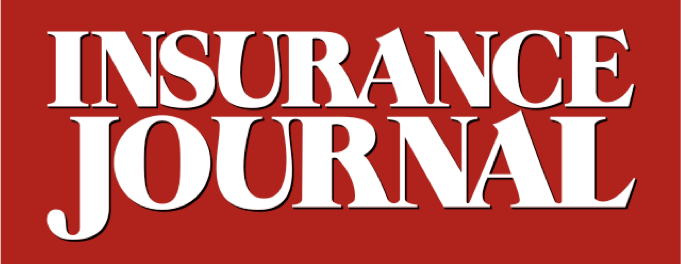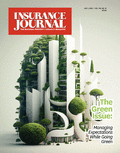I.I.I.’s Earlybird Forecast predicts negative premium growth but continued profitability in 2008
Next year may go down on record as one of the best insurance industry underwriting performances in the past 80 years, according to an industry survey of Wall Street stock analysts and industry professionals.
Analysts expect the industry’s profitability to continue in 2008, albeit with an underwriting performance that will generate a moderately smaller underwriting profit, according to the results of the Insurance Information Institute’s “Earlybird Forecast 2008.” Each year the survey reviews the prospects for the industry in the year ahead.
The continuing respite in catastrophe losses in 2007 combined with strong performances in virtually all major lines of property and casualty (P/C) insurance will propel the industry to another best performing year. The survey also shows that analysts uniformly expect premium growth in 2007 to come in below expectations while the outlook for 2008 remains completely flat to slightly negative. This apparent paradox of strong profits but stagnant premium growth is a reminder of the highly cyclical nature of the P/C business and the fact that the industry’s financial fortunes are determined by a myriad of factors.
Premium Growth in Neutral
The average forecast calls for negative growth in net written premiums in 2008 of 0.3 percent, a slight deterioration from the zero growth (0.0 percent) estimate for 2007. The 0.3 percent decline in premium growth that analysts project for 2008, if accurate, would represent the first decline in annual premiums since 1943, when premium volume declined by 2.4 percent in the midst of World War II.
The zero growth estimate for 2007 is also below the 1.5 percent growth projection in the Earlybird survey in December 2006. Premium growth has decelerated steadily since peaking at 15.3 percent in 2002. This is primarily the result of an across-the-board softening in the personal and commercial lines pricing environment. A weakening economy, leakage of premium to government-operated (re)insurers and strong interest in alternative forms of risk transfer, including various forms of self insurance, captives and catastrophe bonds are also contributing to the slowdown. The major exception to this general trend is hurricane-exposed coastal property insurance coverages, where insurers are seeking to charge premiums that are commensurate with the substantial risks they assume.
It is notable that the premium growth estimate for 2008, though slightly negative, represents a leveling out of growth rather than a continuation of the sharp deceleration trend that began in 2003. This suggests that analysts expect pricing discipline to be a key element in the complex dynamics at work in 2008.
Buyers of insurance are, of course, the clear winners when it comes to reaping the benefits of slowing premium growth. Drivers, homeowners and businesses in most parts of the United States will be left with more cash in their pockets as insurance costs fall in absolute terms, or at least relative to income growth and growth in GDP. The bottom line is that flat or falling insurance prices are lowering the cost of doing business, driving a car or owning a home for many Americans. The price of insurance is dropping relative to personal and business income. Overall, the share of P/C insurance premiums relative to the overall economy will shrink by about 4.9 percent and 4.3 percent in 2007 and 2008, respectively.
The current drought in premium growth is reminiscent of the soft market of the late 1990s, when the industry recorded growth of 2.9 percent in 1997 and 1.8 percent in 1998. Those years presaged some of the worst years in the insurance industry’s history, with combined ratios rising from 102 in 1997 to nearly 116 in 2001. Fortunately, with an expected combined ratio of 93.8 in 2007 and 97.3 in 2008, the comparison — at least so far — appears to be superficial, or at least premature.
Premium and Performance
It should be noted that while premium growth came in below expectations in 2007, the combined ratio estimate for 2007 of 93.8 is materially better than the 97.6 figure predicted a year ago and is up only marginally from the 92.7 combined ratio recorded in 2006. The implication is that the industry’s underwriting performance has not deteriorated as quickly as many had anticipated. Consequently, many insurers delivered strong earnings during the year powered in large part by healthy underwriting profits that could approach $25 billion in 2007, which would be the second largest underwriting profit on record after the $31.7 billion earned in 2006, but still only the third underwriting profit since 1978.
Wall Street has noticed the strong performance. P/C insurer stocks were up 7.1 percent through Dec. 14 (on a market capitalization weighted basis), more than double the 3.5 percent gain of the Standard & Poor’s 500 index over the same period.
Though top line growth has slowed to a standstill, profits (measured in dollar terms) and profitability (as measured by return on equity, or ROE) remain healthy due to a variety of factors, including lower-than-expected catastrophe losses in both 2006 and 2007. Net income (profits) will likely finish the year in the $60 billion to $65 billion range, roughly unchanged from 2006. The respite in catastrophe losses in 2006 and 2007 contributed to the improved profitability. Another factor contributing to current profitability is investment earnings, which could exceed $60 billion in 2007.
Healthy Combined Ratio in 2008
The combined ratio — the ratio of losses and expenses to premiums — for 2008 is projected to be 97.3, a deterioration from an estimated 93.8 in 2007. The 93.8 estimate for 2007, if accurate, would represent one of the top 12 best underwriting performances over the 88-year period beginning in 1920. The 2006 combined ratio of 92.7 was the sixth best over this same span of time. If, as predicted, the combined ratios in 2007 and 2008 come in under 100, they would produce just the third and fourth underwriting profits in the P/C insurance industry since 1978.
It is important to note that the estimate for 2008 assumes a return to “normal” levels of expected catastrophe loss. The slimmer margin of underwriting profitability could be eliminated entirely if catastrophe losses return to moderately high levels but could expand if such losses remain subdued.
While the survey results indicate fundamentally sound underwriting performances in 2007 and 2008, the anticipated 3.5 point deterioration in the combined ratio for 2008 begs questions about 2009 and beyond.
The anticipated underwriting profits in 2008 will help insurers earn their cost of capital (the rate of return necessary to retain and attract capital) for just the third time in many years even though industry profitability as a whole — with an ROE in the 11 percent to 12 percent range — will still likely fall short of the Fortune 500 group for the 21st consecutive year (every year since 1987). There are, of course, many individual insurers who were able to meet or exceed the Fortune 500 in 2007 and are likely to do so once again in 2008.
2008 Market Looks Favorable
What are the biggest potential downside risks for 2008?
Still high on the list is exposure to catastrophic loss. However, many industry observers point to the potential loss of pricing and underwriting discipline as their chief concern in 2008 and beyond. The apparent end of favorable underlying frequency and severity trends is also a concern, especially in private passenger auto insurance. And despite declining tort costs in recent years and the current woes of certain high profile tort kingpins like Bill Lerach (now an admitted felon headed to prison) and Dickie Scruggs (indicted for bribing a judge), there is mounting concern that the tort pendulum which had swung in favor of corporate defendants and insurers in recent years could begin to swing in the opposite direction. A resurgence in bad faith litigation in auto, home and medical malpractice claims and state referenda that potentially raise damage awards are also causes of concern. Anti-insurer activism by a number of state attorneys general is likewise worrisome.
Regulation and Legislation
Regulatory and legislative risks also loom large in 2008. With the charge in party control, 2007 became what was likely the most active year for the industry on Capitol Hill ever, including a large number of Congressional hearings on a wide variety of issues ranging from terrorism and optional federal chartering to natural catastrophe risk and credit-based insurance scores. Separately, some states continue to attack the right of insurers to use certain well-established underwriting criteria.
Among major pressing risks is the looming expiration of the Terrorism Risk Insurance Act on Dec. 31, 2007, and the failure of Congress to approve an extension. Disagreements between the House and Senate concerning the bill’s details have held up passage and are creating uncertainty in commercial insurance markets.
Fortunately for insurers, at least some of the momentum built up in 2006 and 2007 will be carried forward into 2008.
Topics Trends Catastrophe Carriers Profit Loss Legislation Underwriting Market Property Casualty
Was this article valuable?
Here are more articles you may enjoy.


 BlackSuit Cybercrime Gang Blamed in CDK Hack That Roiled Car Dealers
BlackSuit Cybercrime Gang Blamed in CDK Hack That Roiled Car Dealers  Ford Recalls 668,000 2014 F-150 Pickup Trucks Over Transmission Issue
Ford Recalls 668,000 2014 F-150 Pickup Trucks Over Transmission Issue  ‘Great Resignation’ Enters Third Year as Workers Embrace AI, Upskilling, PwC Says
‘Great Resignation’ Enters Third Year as Workers Embrace AI, Upskilling, PwC Says  German Insurtech Wefox to Replace CEO After Board Rejects Mubadala Sales Plan
German Insurtech Wefox to Replace CEO After Board Rejects Mubadala Sales Plan 


